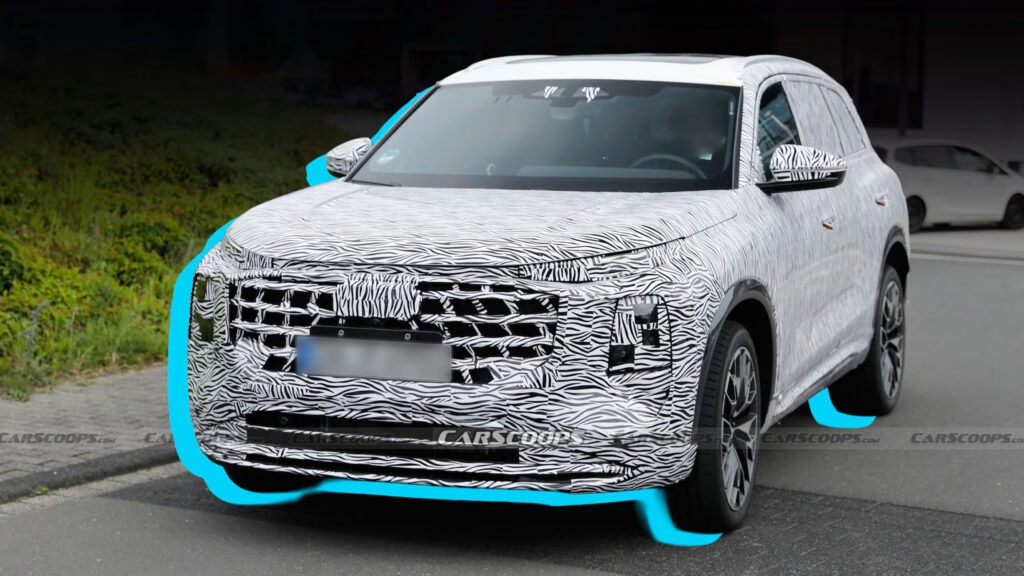The Audi Q6 is making waves in the automotive world, especially with its recent updates tailored for the Chinese market. While many of us are familiar with the Q6 e-tron, an all-electric SUV, the new Q6 is a different beast altogether. Let’s dive into what makes this vehicle stand out and how it fits into Audi’s broader strategy.
What’s New with the Audi Q6?
Recently spotted testing in Germany, the updated Q6 showcases some sleek design changes that are hard to ignore. Among the most noticeable features are the flush door handles and subtle tweaks to the grille and bumpers. These enhancements not only give the Q6 a modern look but also improve aerodynamics—a crucial factor for any vehicle, especially one that aims to compete in the crowded SUV market.
The Q6 is built on a long wheelbase of 2,980 mm (about 117.3 inches), which means rear passengers can expect ample legroom. This is particularly appealing for families or anyone who frequently travels with friends. Plus, there’s a new optional screen above the glovebox, adding a touch of tech-savvy flair to the front cabin.
How Does the Q6 Differ from Its Electric Counterpart?
While the Q6 e-tron is designed exclusively as an electric vehicle (EV) built on Audi’s PPE platform, the Chinese version of the Q6 is powered by a traditional combustion engine. This distinction is significant. The combustion Q6 utilizes a stretched version of the MQB Evo platform, which is also found in the VW Golf and Audi A3. This means that while the Q6 e-tron is all about sustainability and electric performance, the combustion variant caters to a different audience, particularly in markets where EV adoption is still growing.
What Powers the Q6?
In terms of performance, the combustion-powered Q6 is expected to primarily feature VW’s 2.0-liter turbocharged four-cylinder engine. There’s also a possibility of a 2.5-liter VR6 engine making its way into the lineup, although recent trends suggest that Audi might focus on the more efficient four-cylinder option. This engine choice not only aligns with global emissions standards but also offers a balance of power and fuel efficiency that many consumers are looking for.
The Q6’s engine lineup reflects broader trends in the automotive industry, where manufacturers are increasingly prioritizing efficiency without sacrificing performance. For instance, the EA888 four-cylinder engine can deliver similar power outputs to the older VR6 while being less taxing on the environment.
When Can We Expect to See It?
The current iteration of the Q6 was introduced in China in 2022 through a joint venture between Audi and SAIC. However, the updated model is not expected to hit the market until 2026 or 2027. This timeline highlights the differences in market dynamics; while the Q6 e-tron is available in the U.S. and Europe, the combustion version will remain exclusive to China, where consumer preferences still lean heavily towards traditional fuel sources.
What Does This Mean for Audi’s Future?
Audi’s strategy with the Q6 underscores a significant shift in how automakers are approaching different markets. By offering both electric and combustion options, Audi is catering to diverse consumer needs while also preparing for a future where electric vehicles will dominate. This dual approach allows them to maintain a competitive edge in regions where EV infrastructure is still developing.
The big takeaway? The Audi Q6 isn’t just about offering another SUV; it’s about understanding and adapting to market demands. Whether you’re drawn to the electric Q6 e-tron or the combustion-powered variant, Audi is clearly committed to providing options that meet varying consumer preferences. So, keep an eye on this space—Audi’s evolving lineup is sure to bring more exciting developments in the years to come.

